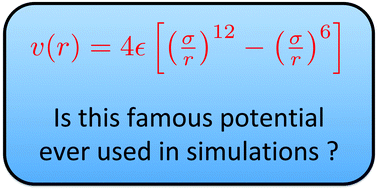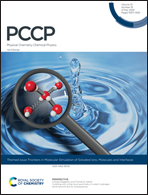The Lennard-Jones potential: when (not) to use it†
Abstract
The Lennard-Jones 12-6 potential (LJ) is arguably the most widely used pair potential in molecular simulations. In fact, it is so popular that the question is rarely asked whether it is fit for purpose. In this paper, we argue that, whilst the LJ potential was designed for noble gases such as argon, it is often used for systems where it is not expected to be particularly realistic. Under those circumstances, the disadvantages of the LJ potential become relevant: most important among these is that in simulations the LJ potential is always modified such that it has a finite range. More seriously, there is by now a whole family of different potentials that are all called Lennard-Jones 12-6, and that are all different – and that may have very different macroscopic properties. In this paper, we consider alternatives to the LJ 12-6 potential that could be employed under conditions where the LJ potential is only used as a typical short-ranged potential with attraction. We construct a class of potentials that are, in many respects LJ-like but that are by construction finite ranged, vanishing quadratically at the cut-off distance, and that are designed to be computationally cheap. Below, we present this potential and report numerical data for its thermodynamic and transport properties, for the most important cases (cut-off distance rc = 2σ (“LJ-like”) and rc = 1.2σ (a typical “colloidal” potential)).

- This article is part of the themed collection: Frontiers in Molecular Simulation of Solvated Ions, Molecules and Interfaces


 Please wait while we load your content...
Please wait while we load your content...